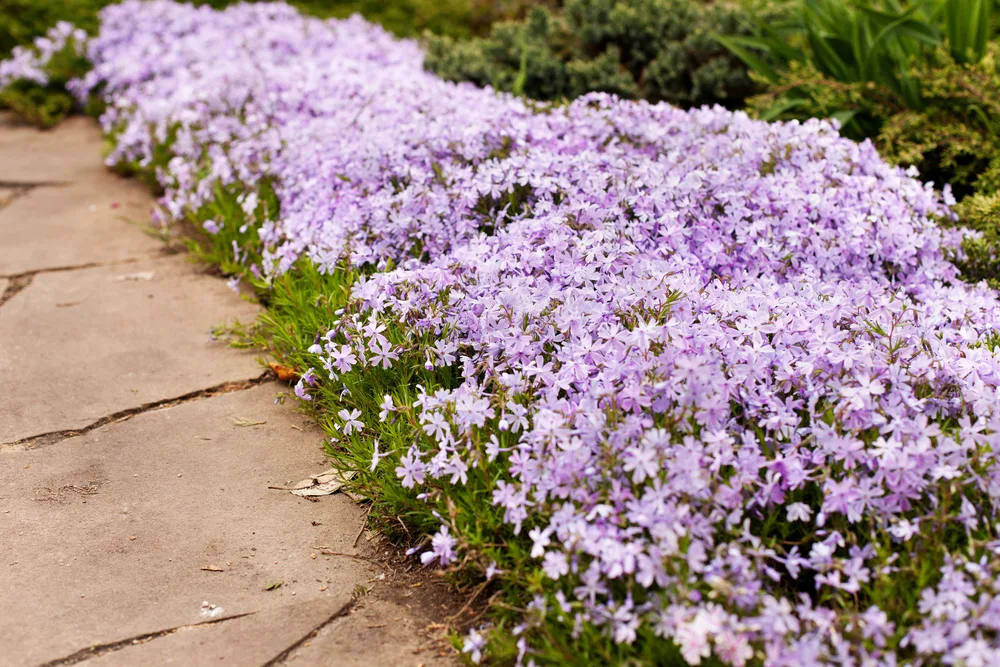
Ground covers are low-lying plants that spread by creeping along the surface of the soil.
Spanning beautiful flowering plants that carpet the landscape to handsome foliage that brings texture and interesting shapes to the garden, ground covers can vary between just a few inches tall to a foot or more.
Ground cover plants can be perennial or self-seeding annuals, and there are myriad choices in species that prefer wet or dry soils, sun or shade, as well as evergreen or deciduous types. Some varieties provide lovely fragrance, attract pollinators, are edible, or have medicinal qualities too.
Planting ground covers is a wonderful way to naturalize the landscape and fill in spaces where other plants refuse to grow. And because they are so low maintenance, ground covers require very little care to keep looking fantastic year after year.
Why Grow Ground Cover Plants?
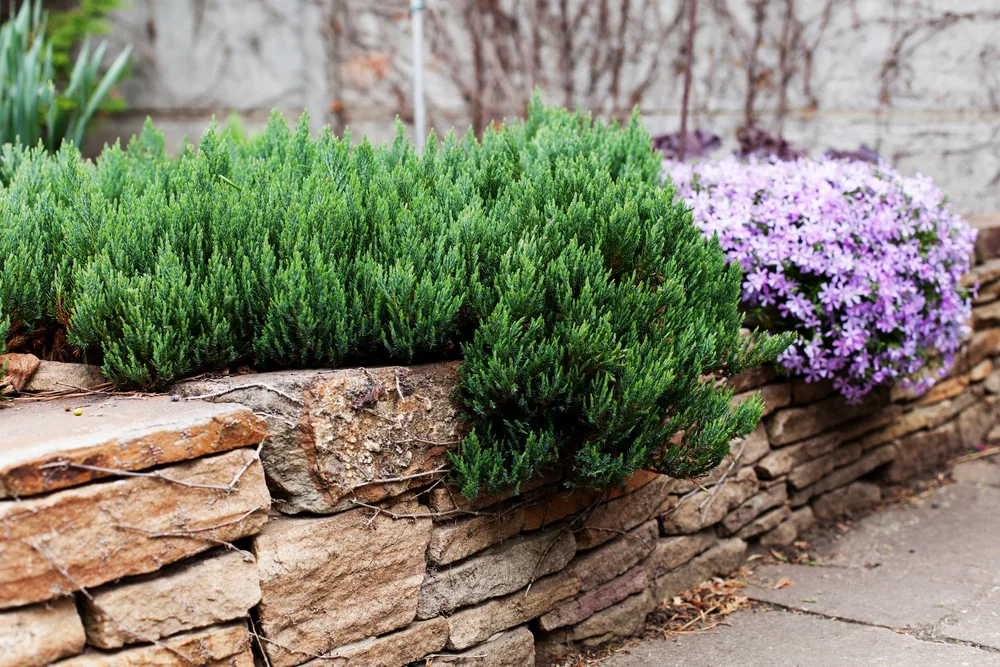
Aside from aesthetics, ground covers are plenty utilitarian and can help solve numerous landscaping problems that arise in specific areas of the yard:
As a Lawn Replacement
Caring for traditional turf grass requires regular mowing, watering, fertilizing, aerating, over-seeding, and topdressing to keep it looking lush and green throughout summer.
Reseeding lawns with ground cover plants is far less work in the long run. Choose low-lying plants that can tolerate some trampling to replace grass and add more biodiversity to your outdoor spaces.
As Weed Control
Nature abhors a vacuum. Any bare spot in the yard will always be quickly occupied with weeds and other undesirable volunteers.
Ground covers are ideal for filling empty spaces in the garden. The best ground covers for weed control must have a very dense habit that chokes out invading plants.
On Hills and Slopes
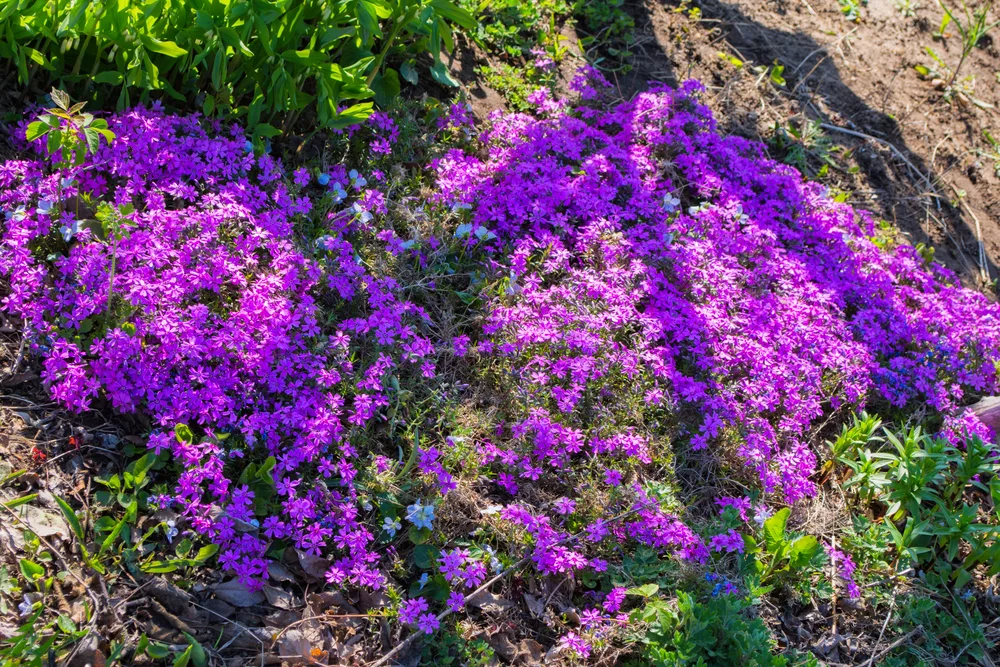
Growing plants on hilly terrain and steep slopes will help prevent erosion because the roots help to anchor the soil in place.
Ground covers a great choice for erosion control since they never need to be mowed or cut back.
As a Living Mulch
Ground covers may also be used in the garden as living mulch.
Like wood chips and other non-living mulches, ground covers help conserve moisture in the soil by blocking out sunlight. They also insulate the earth by keeping the ground cooler in summer and warmer in winter.
14 Best Ground Cover Plants & Flowers
All these beauties are native to North America, and so require almost no maintenance since they are perfectly attuned to this part of the world.
1. Wild Ginger (Asarum canadense)
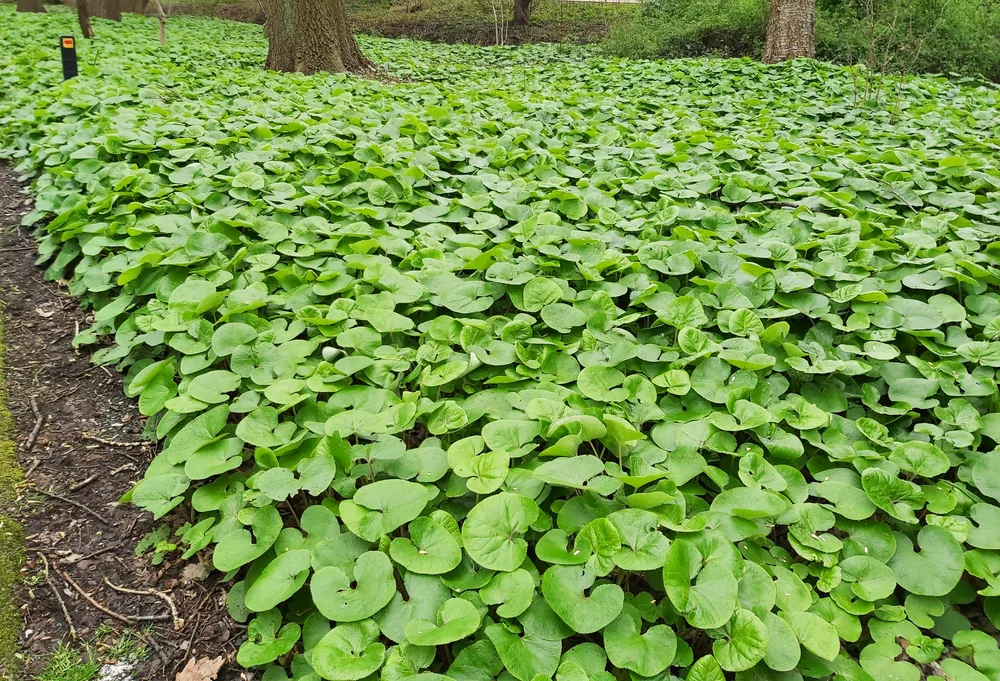
Wild ginger is an adorable specimen with soft and downy heart-shaped leaves that can reach about 6-inches in diameter.
In spring, they bear small reddish flowers near the surface of the soil, hidden by the foliage; take a peek beneath the leaves to take in these surprising blooms.
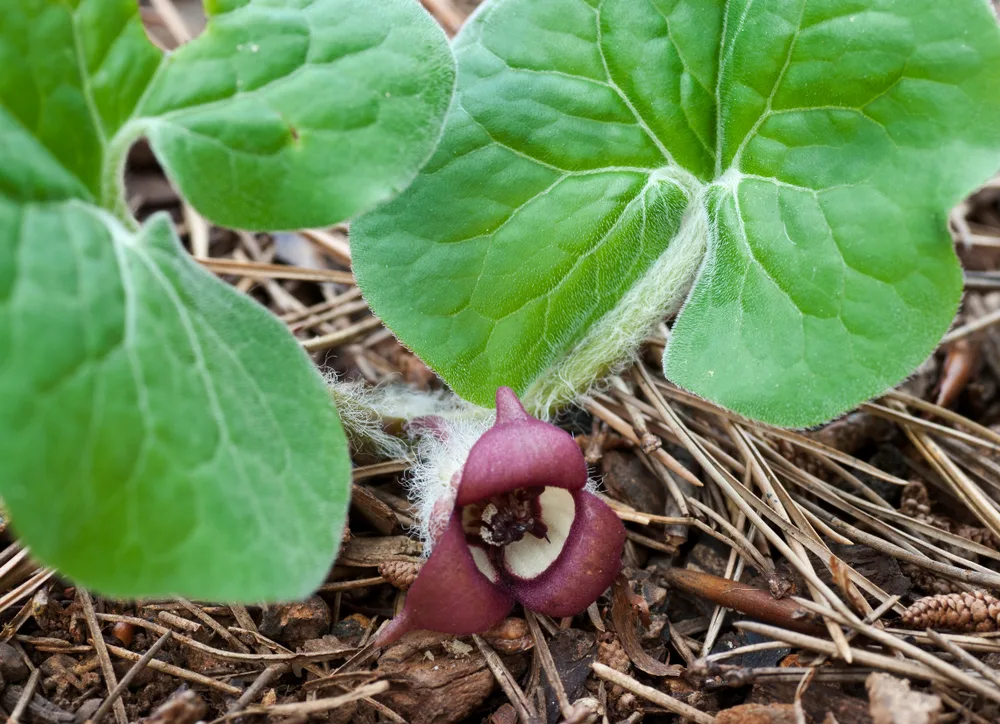
Forming dense mats through spreading rhizomes, wild ginger is best suited to damp and dark areas of the garden. Since it is native to woodlands and forests, it’s a great option for planting beneath the shade of trees.
Although wild ginger is not related to the culinary gingers of Asia, it is indeed edible. More pungent than ginger root, wild ginger leaves and rhizomes were traditionally used as a flavoring for foods and tea by Native Americans.
Hardiness zone: 4 to 6
Sun exposure: Part shade to full shade
Height: 6 inches to 1 foot
Spread: 1 to 1.5 feet
2. Goldenstar (Chrysogonum virginianum)
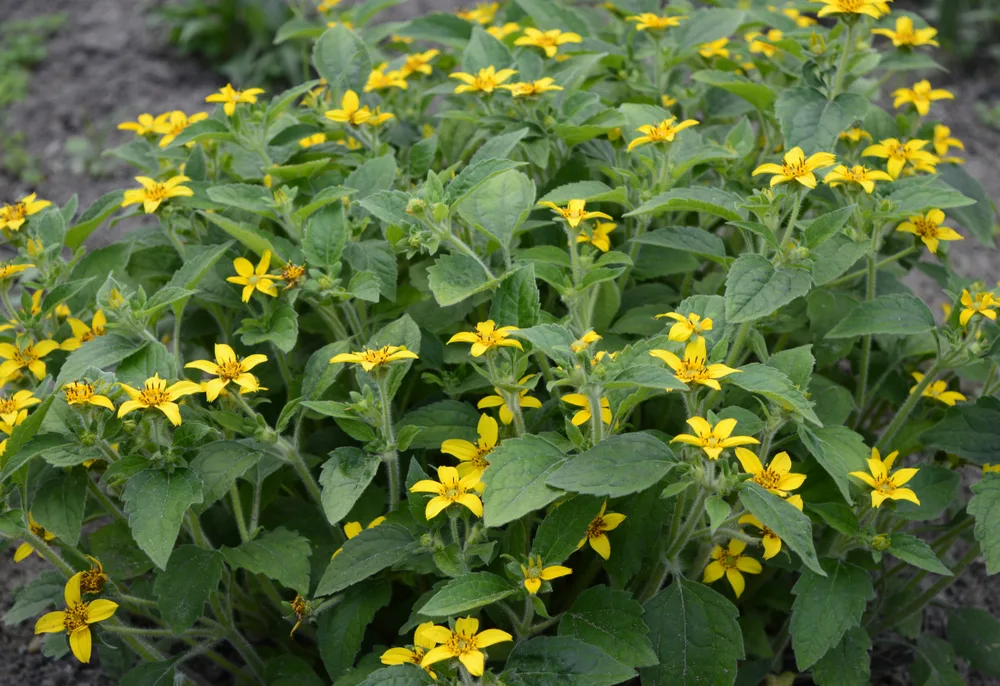
Goldenstar is a low-growing perennial with bright green leaves that spreads in a mat along the ground. It is native to forests from Pennsylvania to Louisiana.
While the foliage reaches only 4-inches in height, goldenstar blooms profusely in spring with flowers that rise above the greenery to 10-inches or more. The cheery yellow flowers are star-shaped with five rounded petals, 1.5-inches across.
It prefers soils that are consistently moist with plenty of shade, though it can tolerate full sun when planted in damp areas of the garden.
Hardiness zone: 5 to 9
Sun exposure: Part shade to full shade
Height: 4 inches to 1 foot
Spread: 9 inches to 1.5 feet
3. Aromatic Aster (Symphyotrichum oblongifolium)
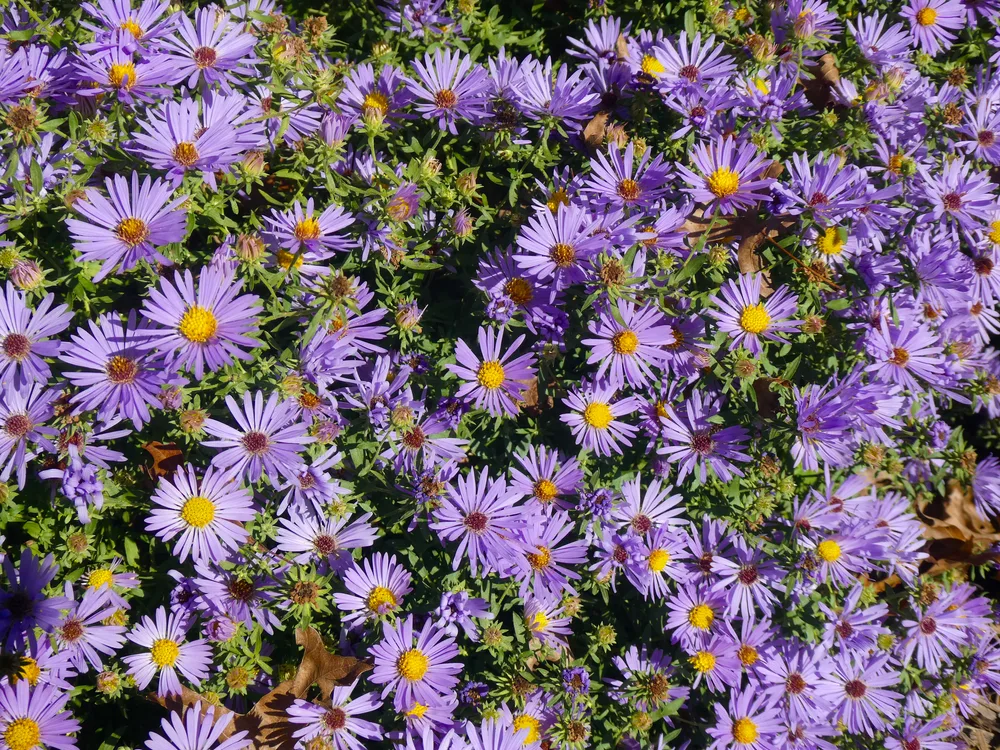
Aromatic aster is a wonderful option for sunny and dry parts of the landscape. Tolerant of poor soils and drought, aromatic aster features showy flowers that bloom from August to September.
It has a bushy yet compact habit, with rigid blue-green leaves that fill the air with the scent of balsam when crushed. The daisy-like flowers offer a stunning show of violet blue slender petals arranged around a yellow center.
These are very attractive to butterflies and birds, making aromatic aster a good pick for native pollinator gardens.
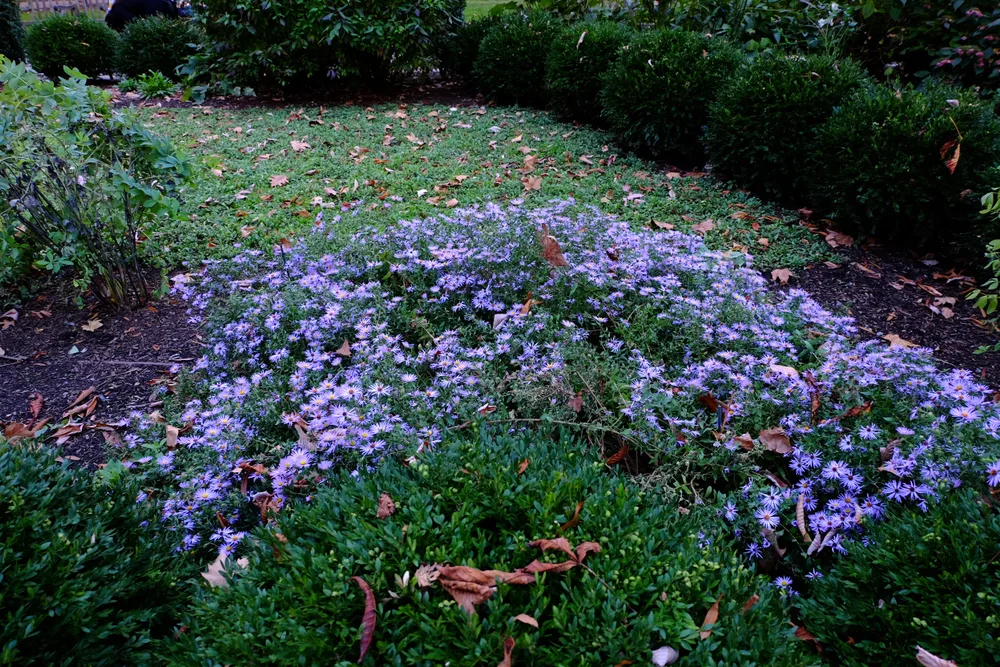
Hardiness zone: 3 to 8
Sun exposure: Full sun
Height: 1 to 2 feet
Spread: 1 to 3 feet
4. Wild Strawberry (Fragaria virginiana)
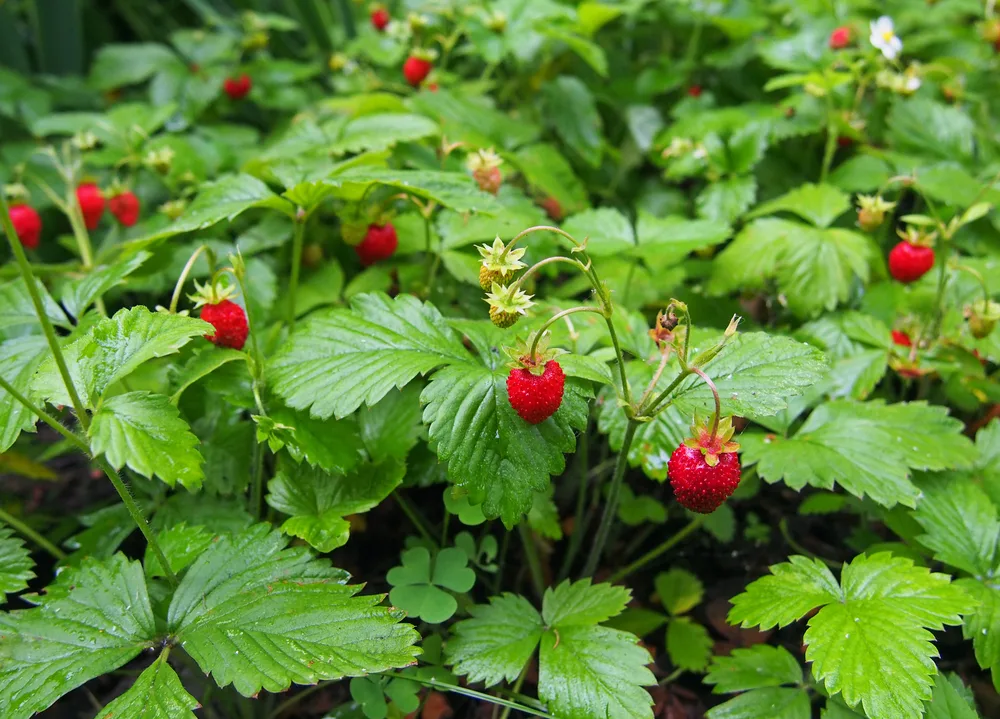
With familiar trifoliate, coarsely toothed leaves, wild strawberry is a low growing and sprawling perennial that spreads by runners that root along the surface of the ground.
Wild strawberry blooms from April to May with white petaled flowers with a yellow center. These will develop into small red fruits, just a half inch across.
Though they are smaller than cultivated strawberries, they are just as sweet and tasty – delicious plucked from the plant or prepped into jams and pies.
Hardiness zone: 5 to 9
Sun exposure: Full sun to part shade
Height: 3 to 9 inches
Spread: 1 to 2 feet
5. Purple Poppy Mallow (Callirhoe involucrata)
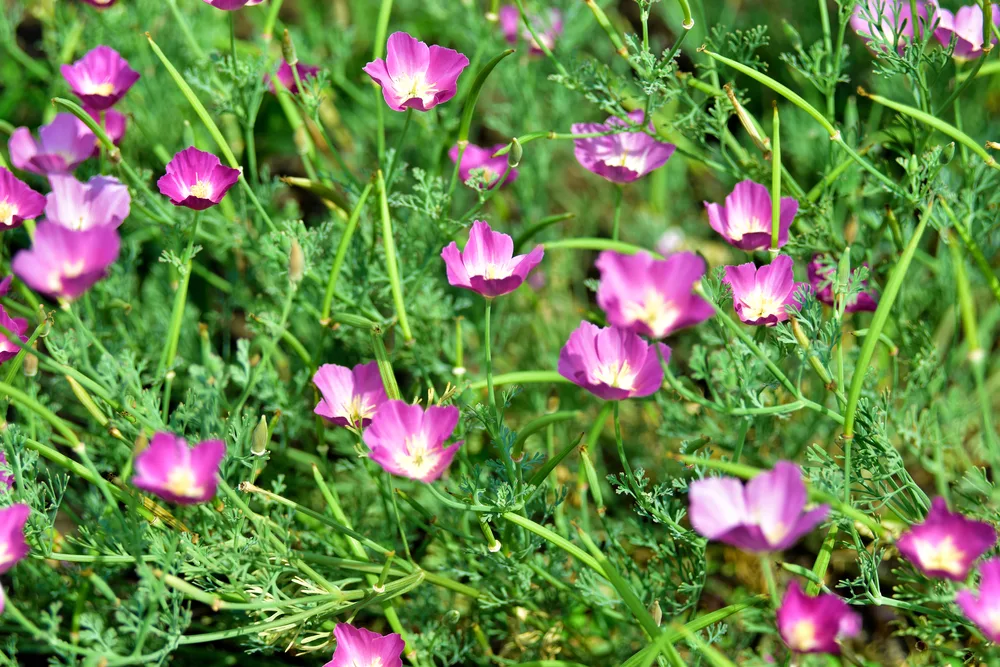
Purple poppy mallow is another lovely ground-hugger that grows easily in dry or moist soil in sunny spots in the yard.
Starting out as low mound with interesting and deeply lobed leaves, purple poppy mallow blooms intermittently throughout the growing season.
The brilliant display of magenta hued, cup-shaped flowers, 2.5 inches across, occurs from mid-spring to autumn. The blooms open in the morning and close in the evening. Once pollinated, the blooms remain closed.
When happy in its habitat, purple poppy mallow will readily self-seed as well.
Hardiness zone: 4 to 8
Sun exposure: Full sun
Height: 6 inches to 1 foot
Spread: 6 inches to 3 feet
6. Virginia Creeper (Parthenocissus quinquefolia)
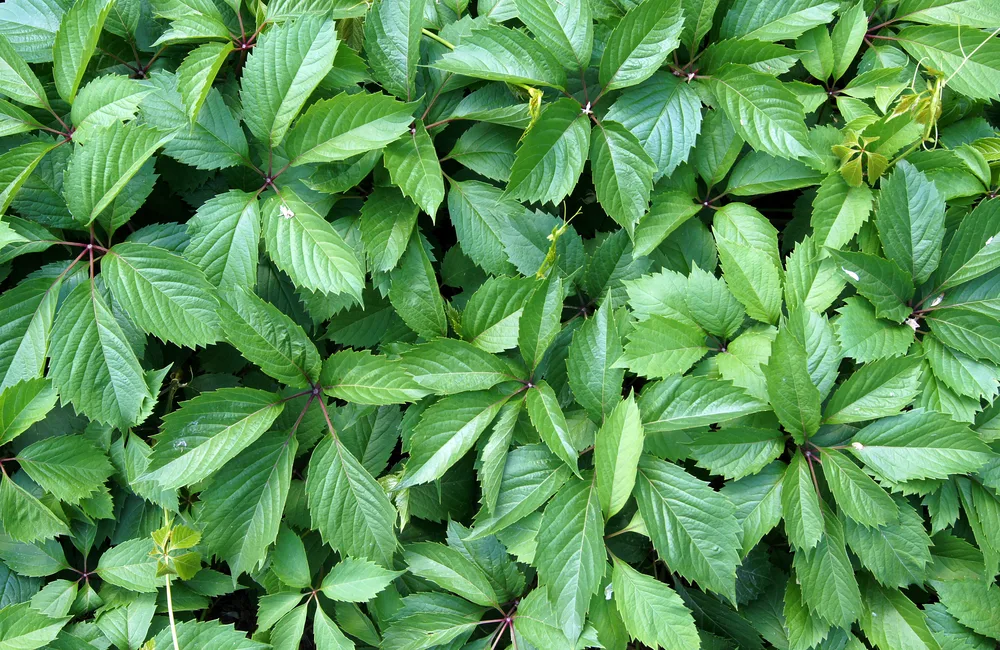
Virginia creeper is a beautiful vining plant most often used as a façade green. It climbs up any nearby vertical surface to a height of up to 50 feet.
Although it is climber, this perennial vine is also a sprawler that will creep along horizontal surfaces just as splendidly. Forming a dense, low growing carpet, compound leaves are composed of five toothy leaflets along the vine with suckers that root themselves to the ground.
The leaves are dark green in summer but turn vibrant red and purple hues in fall, providing a dramatic show as the season draws to a close.
Hardiness zone: 3 to 9
Sun exposure: Full sun to part shade
Height: 3 to 6 inches
Spread: 5 to 10 feet
7. Creeping Juniper (Juniperus horizontalis ‘Mother Lode’)
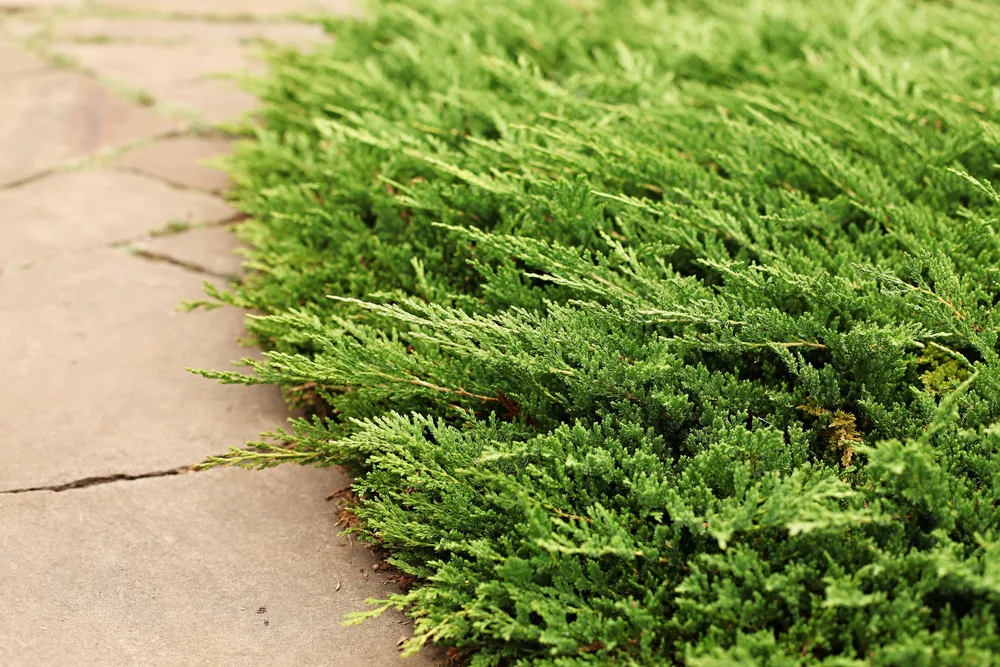
Creeping juniper is an evergreen shrub with soft and feathery, green to golden needles.
A true ground dweller, the ‘Mother Lode’ cultivar typically only reaches 4-inches in height and spreads outward in dense carpeting mat. As branches creep along the surface of the soil, they root themselves in place.
Creeping juniper is a perfect candidate for slopes or other spots that can use some erosion control. It is also very adaptable to poor, rocky, sandy, dry, and hot areas – the only thing it cannot tolerate is wet soils.
Hardiness zone: 3 to 9
Sun exposure: Full sun
Height: 3 to 6 inches
Spread: 8 to 10 feet
8. Woodland Stonecrop (Sedum ternatum)
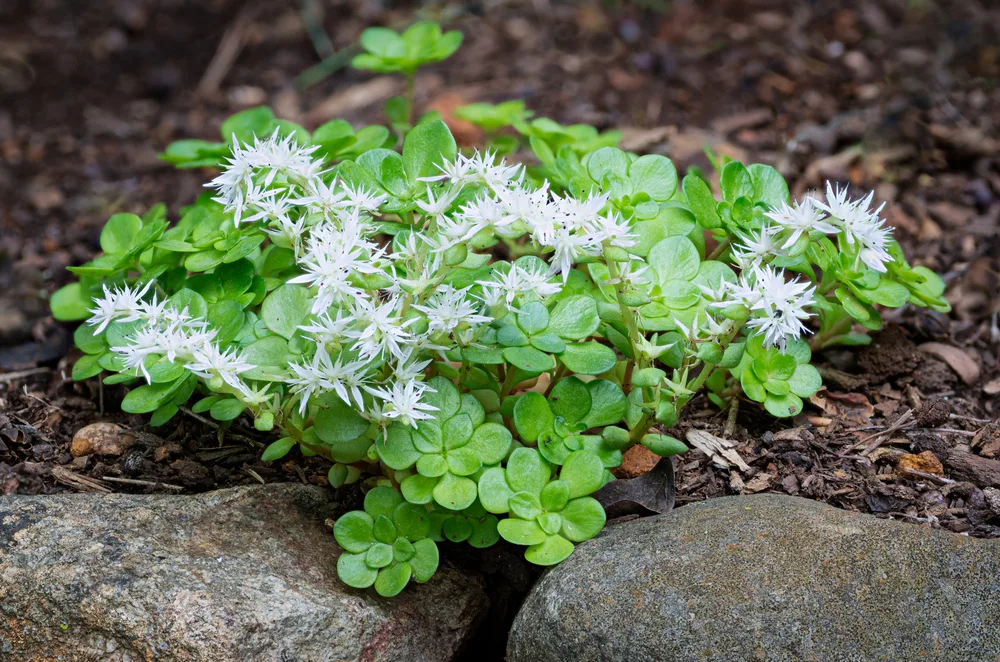
Woodland stonecrop is a charming succulent-like perennial that bears whorls of fleshy and rounded light green leaves. The leaves always grow in threes, and root in place as they creep across the earth.
Like other sedums, it is most at home in stony landscapes and rock gardens.
In April, woodland stonecrop blooms with clusters of tiny white flowers that arise on stems above the foliage.
Hardiness zone: 4 to 8
Sun exposure: Full sun to part shade
Height: 3 to 6 inches
Spread: 6 to 9 inches
9. Creeping Phlox (Phlox subulata)
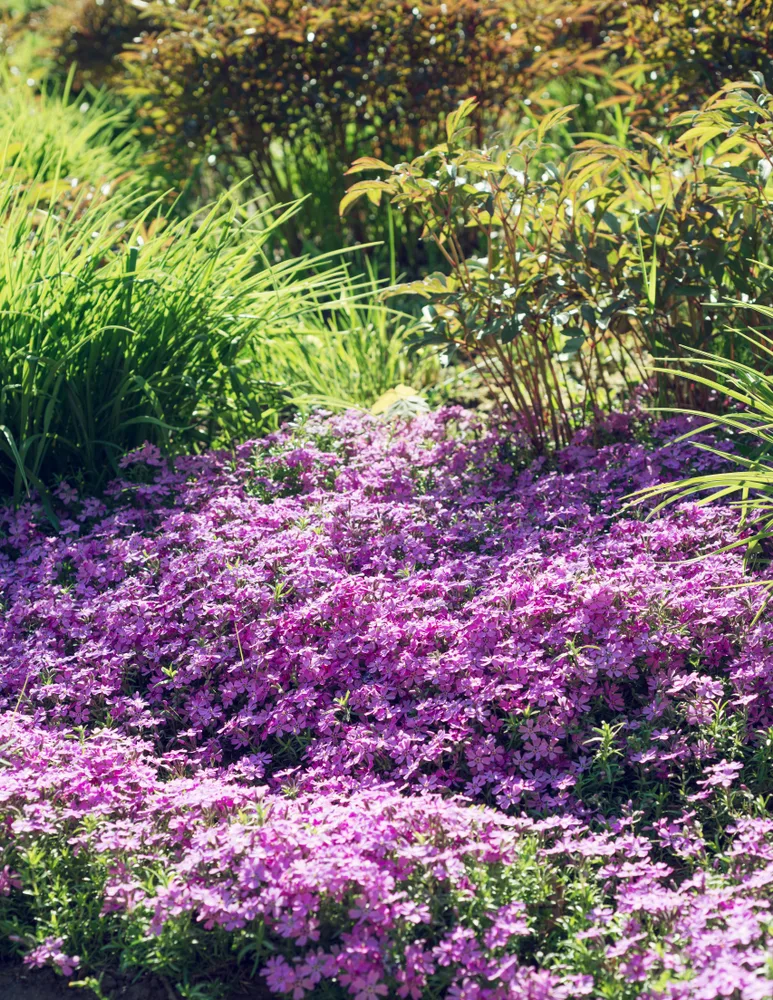
Providing a burst of color and fragrance from early to late spring, creeping phlox is a sun-lover that readily creates a gorgeous carpet across the landscape.
It looks especially beautiful when planted along pathways and cascading atop retaining walls.
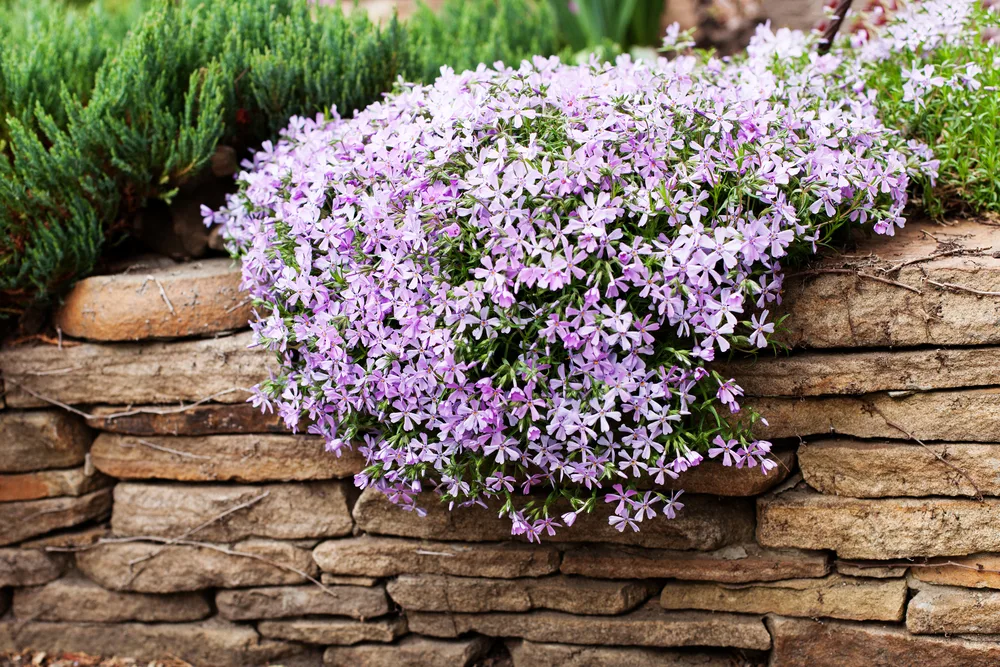
Blooming profusely in pinks, purples, and whites, depending on the particular cultivar, the flowers are tubular with five rounded petals that feature a prominent notch down the center.
Hardiness zone: 3 to 9
Sun exposure: Full sun
Height: 3 to 6 inches
Spread: 1 to 2 feet
10. Roundleaf Liverleaf (Anemone americana)
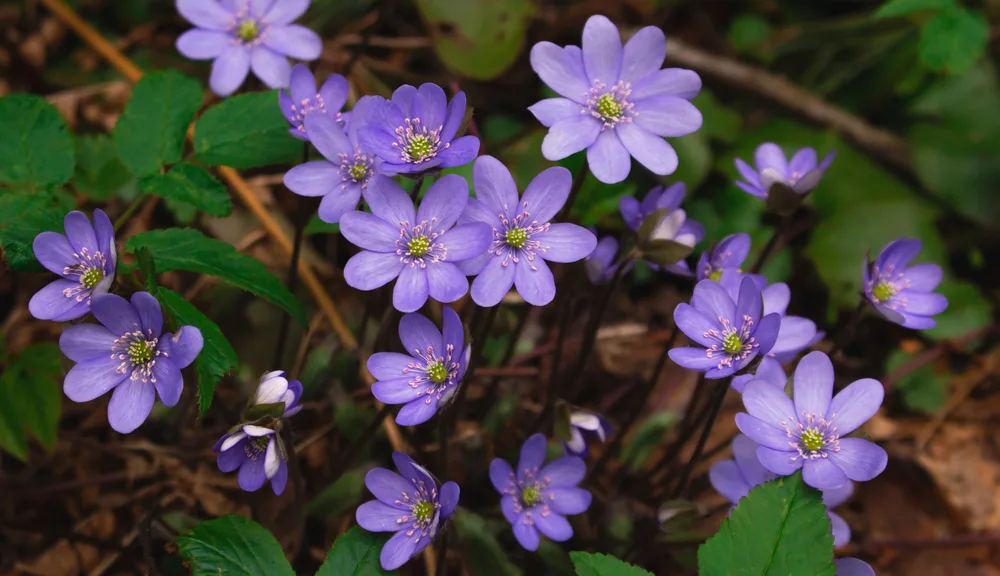
Roundleaf liverleaf blooms early in the season with anemone -like flowers in light blue, lavender, or white. These arise singly on a hairy stem in March, before the foliage has had a chance to resprout.
It is an important early source of nectar for pollinating insects. Once the flowers fade, fresh greens appear close to the ground. These are quite handsome too, large and leathery with three rounded lobes.
As the seasons wears on, the green leaves take on a reddish, wine-colored hue.
When planted in fertile and consistently moist soils, roundleaf liverleaf will self-seed to create a matting effect.
Hardiness zone: 3 to 8
Sun exposure: Part shade
Height: 6 to 9 inches
Spread: 6 to 9 inches
11. Bunchberry (Cornus canadensis)
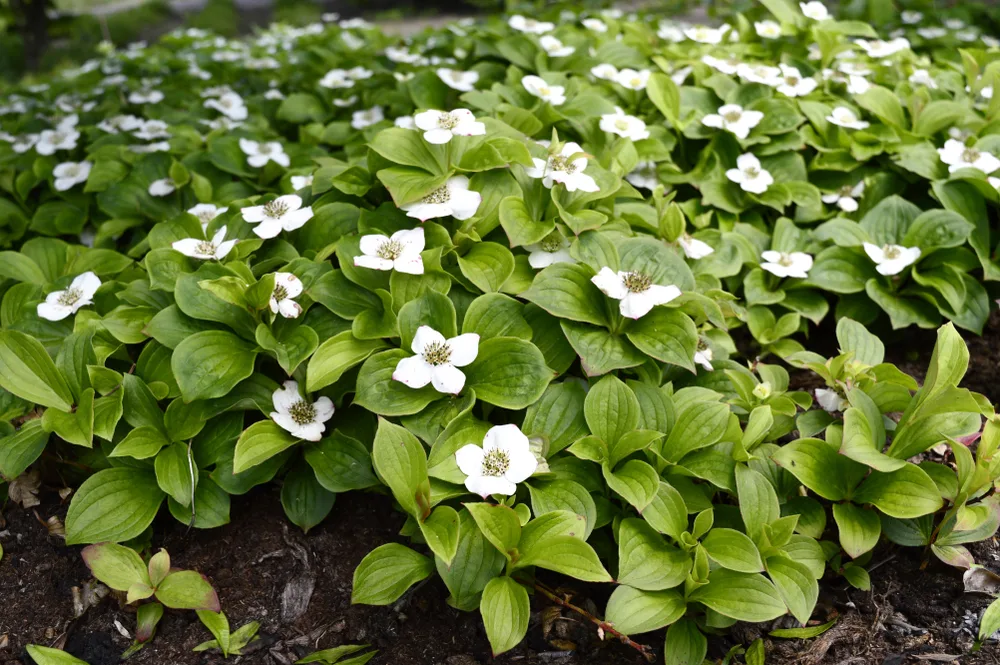
Bunchberry is a circumpolar species, native to Greenland and Eastern Asia, as well as North America.
It is a very attractive specimen with veined, oval leaves that surround a single flower with four petal-like bracts in white.
Flowers give way to dense clusters of bright red berries in August, edible to humans and beloved by birds.
Bunchberry tends to prefer cooler climates with plenty of shade. Plant them underneath trees, shrubs, and other shady areas in the garden.
Hardiness zone: 2 to 7
Sun exposure: Part shade
Height: 3 to 9 inches
Spread: 6 inches to 1 foot
12. White Evening Primrose (Oenothera speciosa)
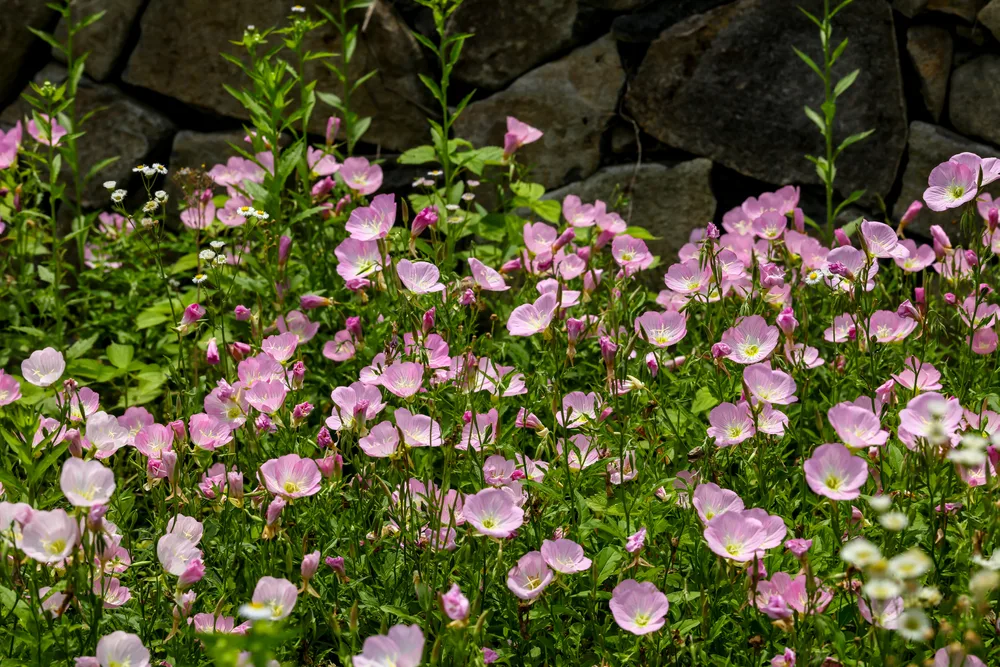
White evening primrose, also known as pink ladies and Mexican primrose, is a heat loving, drought tolerant perennial that ranges from Missouri to Mexico.
A vigorous grower that spreads by rhizomes and self-seeding, it will form large colonies over time and needs plenty of space to thrive.
Bearing fragrant, large, satiny petals with delicate veining, blooms start out white then turn pink as they mature. Like common evening primrose, the flowers open in the evening and close up in the morning.
White evening primrose provides this intriguing show from late spring until early fall.
Hardiness zone: 4 to 9
Sun exposure: Full sun
Height: 9 inches to 2 feet
Spread: 1 to 1.5 feet
13. Sea Thrift (Armeria maritima)
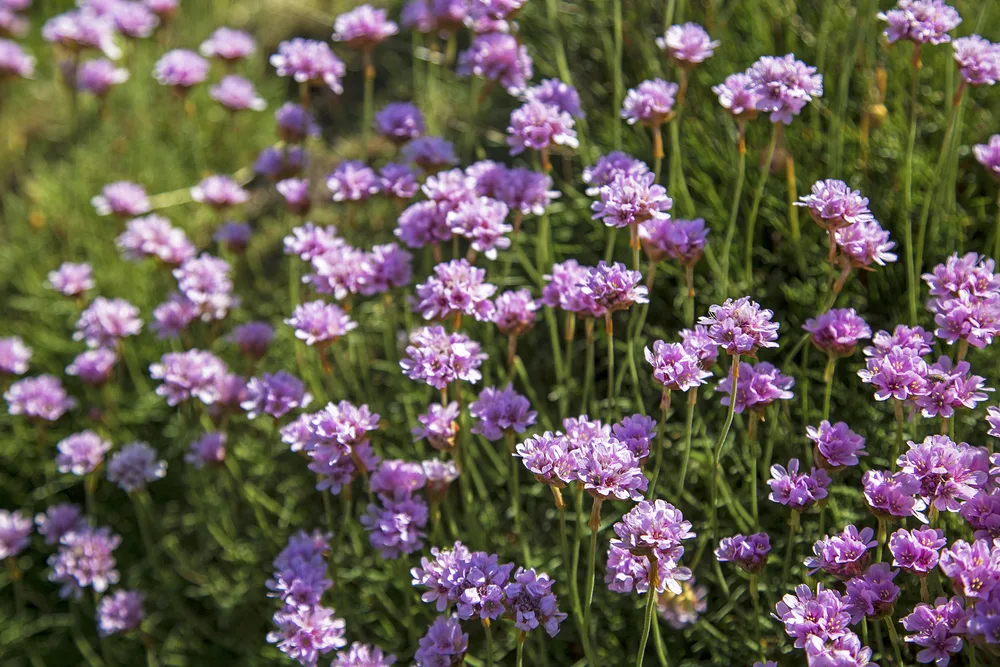
Sea thrift’s native range spans coastal areas of the Northern Hemisphere. It has evolved to grow where other plants struggle to survive – in dry, infertile soil next to the salty spray of the seas.
The foliage is low-lying, compact, mounded, and dense with dark green, grass-like leaves.
In April, sea thrift blooms generously with clusters of tiny pink or white flowers that create a spherical shape. These rise above the foliage to a height of about 1 foot.
Each flower head is more than 3-inches across, and are highly prized by butterflies and bees.
Hardiness zone: 4 to 8
Sun exposure: Full sun
Height: 6 inches to 1 foot
Spread: 6 inches to 1 foot
14. Wild Geranium (Geranium maculatum)
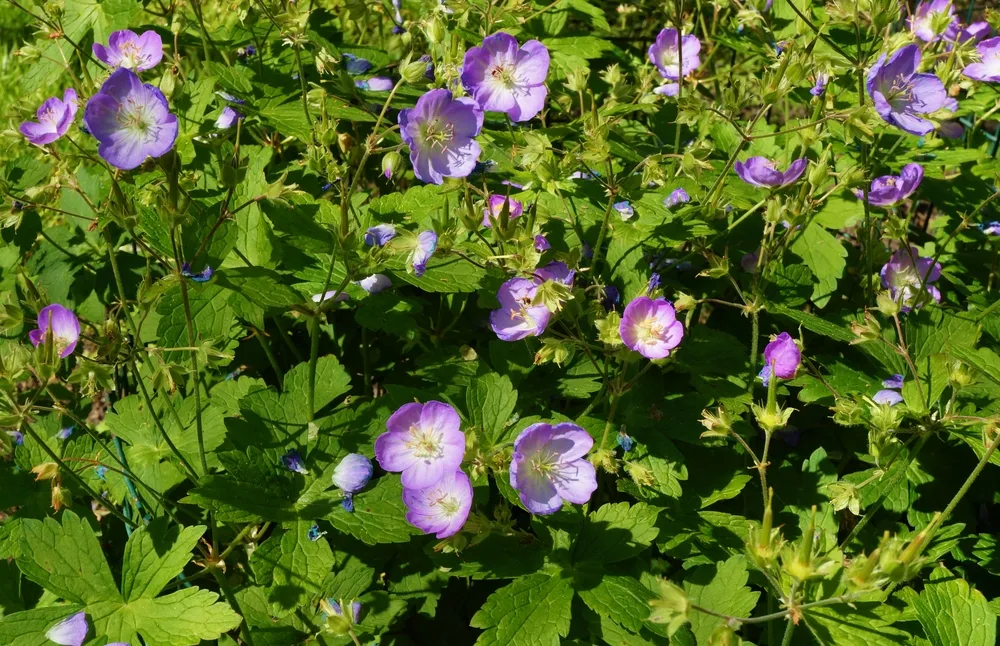
Wild geranium is an easygoing perennial ground cover that takes well to fertile or poor soils, sun or shade, and moist or dry sites.
It is a pretty plant too, with deeply lobed, green leaves that may reach up to 6-inches across.
Wild geranium blooms for a good 6 to 7 weeks in mid-spring with papery saucer-shaped flowers in pink or lavender. Occasionally you may have a second bloom in autumn.
Plant wild geranium in masses to create a wonderful flowering shrub. The numerous blooms will become a favorite spot for butterflies and other pollinating insects.
Hardiness zone: 3 to 8
Sun exposure: Full sun to part shade
Height: 1.5 to 2 feet
Spread: 1 to 1.5 feet

Get the famous Rural Sprout newsletter delivered to your inbox.
Including Sunday musings from our editor, Tracey, as well as “What’s Up Wednesday” our roundup of what’s in season and new article updates and alerts.

